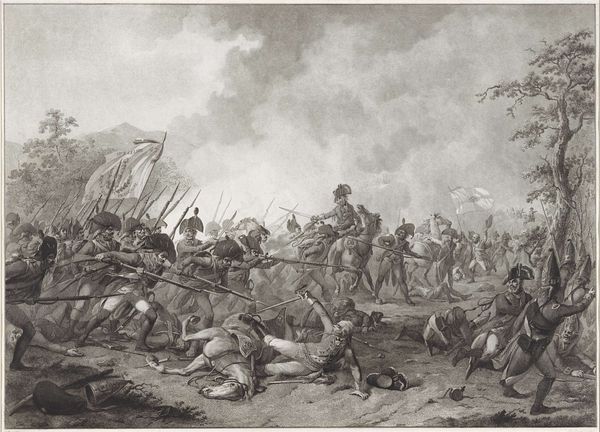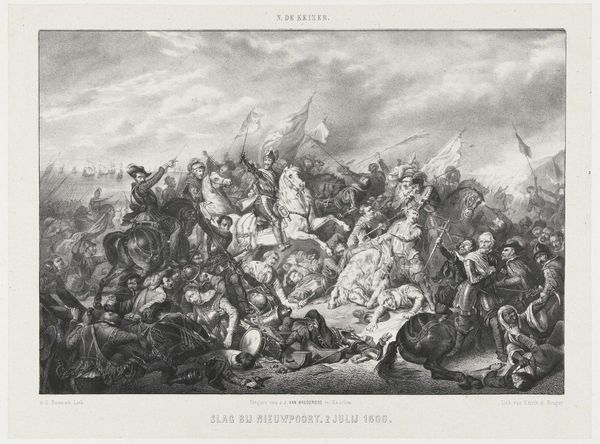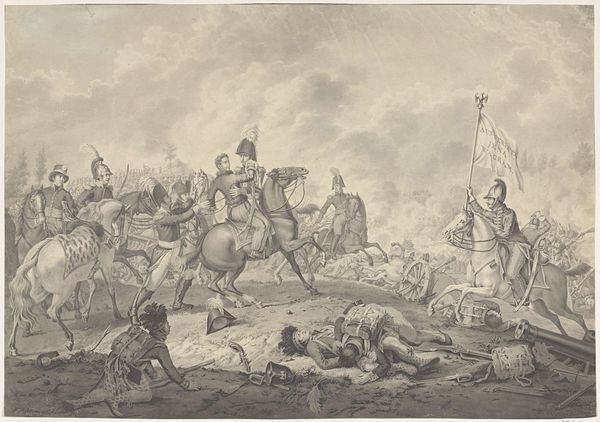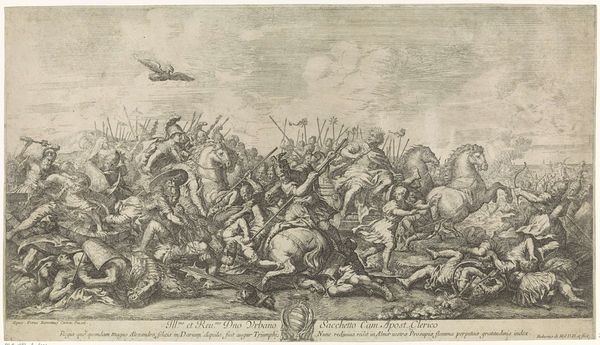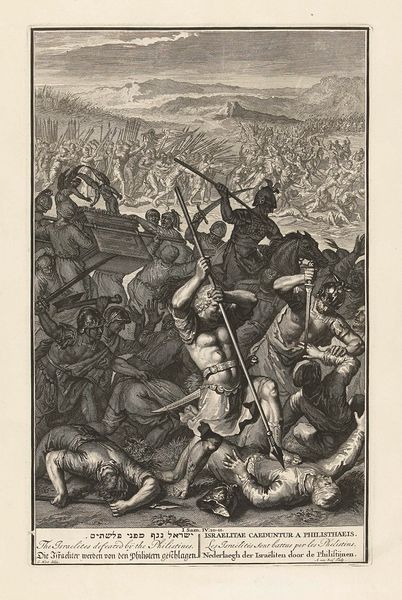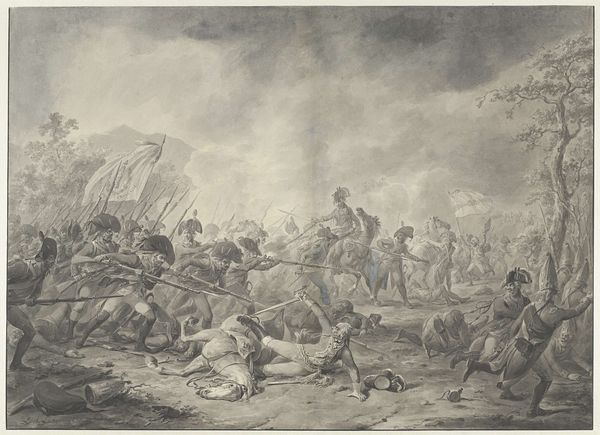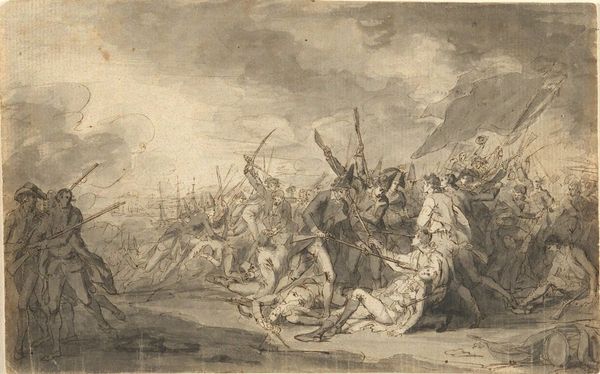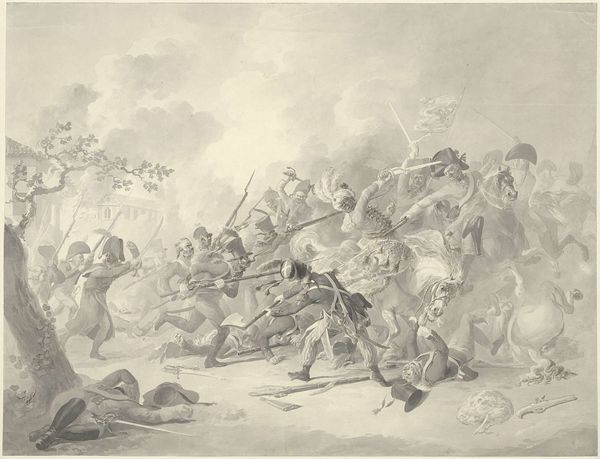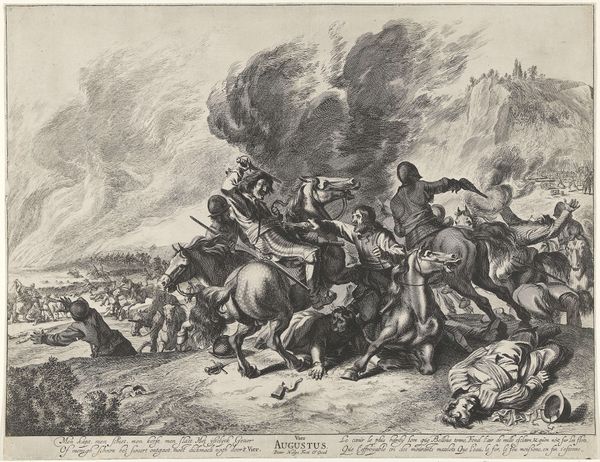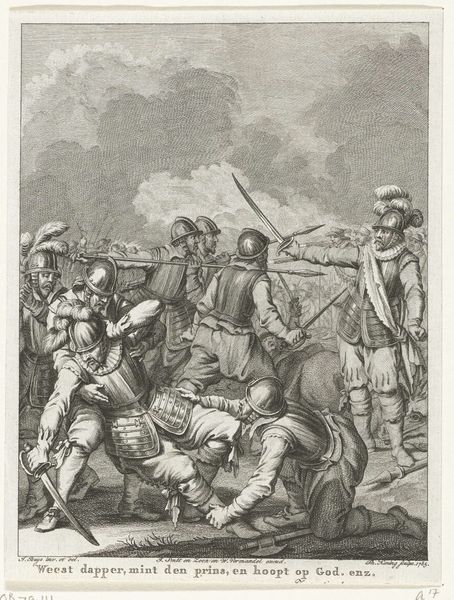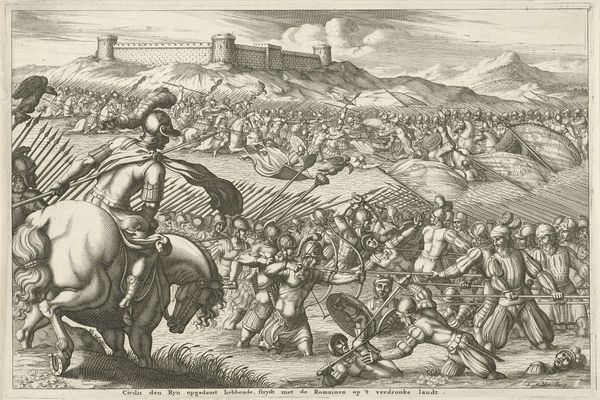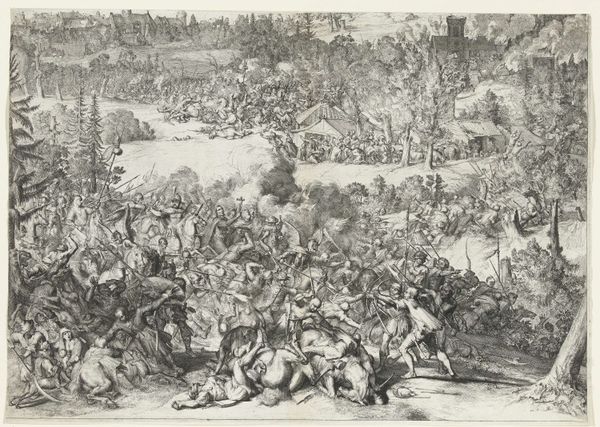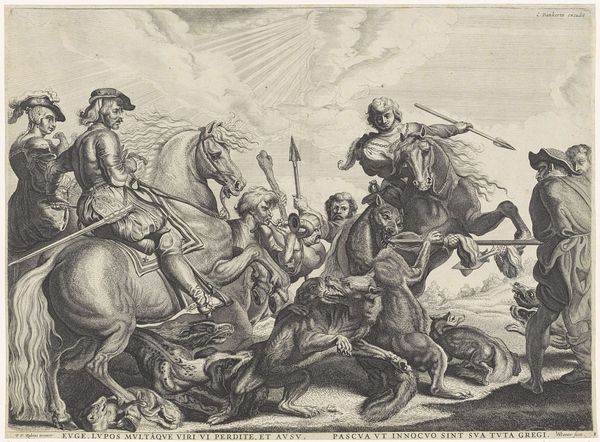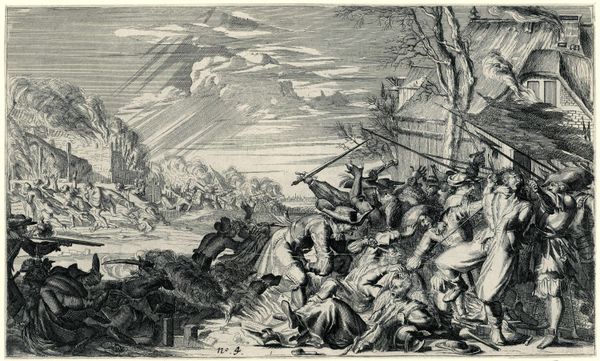
engraving
#
baroque
#
landscape
#
figuration
#
line
#
history-painting
#
engraving
Dimensions: height 462 mm, width 719 mm
Copyright: Rijks Museum: Open Domain
Editor: We're looking at "Cavaleriegevecht," or "Cavalry Battle," an engraving by Albertus Clouwet, created sometime between 1646 and 1679. It depicts a chaotic clash of mounted soldiers. There’s a real sense of movement and violence. What jumps out at you when you see this piece? Curator: Well, considering this engraving through a materialist lens, I'm immediately drawn to the process. Think about the labor involved in producing this image: the artist’s technical skill but also the socioeconomic system that allowed for it. This isn’t just about aesthetics, it's about production and consumption. How does the medium, engraving, contribute to the story it tells about war? Editor: That's a great question. It's reproducible, right? Meant to be disseminated widely. So, what story *is* it telling? Is it glorifying war, or… Curator: Consider the engraving process itself. Each line meticulously etched, each impression struck. It speaks to a kind of labor, a careful craftsmanship used to portray violent labor – the battle. Notice the class implications – the ornate armor, the quality of the horses. All this points to resources. Were these images commissioned and circulated to promote a certain political ideology, perhaps linked to military campaigns of the time? What was the consumer base for prints like these? Editor: So you're saying, it’s not just *about* the battle, but also *about* the act of making the image itself, and the systems it implies? That it was intended to be a commercial item for possibly political propaganda reasons? Curator: Exactly. The ‘what’ of the image cannot be separated from the ‘how’ and the ‘why.’ Examining the production and distribution sheds light on its function in 17th-century society. Does considering the engraving’s accessibility, its inherent reproducibility, alter your initial perception of the artwork's composition? Editor: It definitely adds another layer to my understanding. I now see the piece not just as a depiction of a battle, but as a product of specific material and economic forces. It highlights the labor of art as an action contributing to cultural dissemination and ideological shaping of baroque values, right? Thanks, that really helps me view the engraving in its historical context! Curator: My pleasure! Considering the material reality provides tangible meaning to artistic creations and reveals cultural values beyond just aesthetics.
Comments
No comments
Be the first to comment and join the conversation on the ultimate creative platform.
